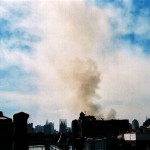 Dave Tomsey
Dave TomseyOn the second day of 2011, the James Zadroga Act was authorized to broaden and renew funding and extend benefits to Ground Zero workers whose death was a result of exposure. These exposures were directly and indirectly caused by toxins present in the billowing clouds of dusts and smoke following the worst tragedy to happen on American soil in my lifetime. The tragic sickness of countless rescue workers continues to add heartbreak where there is little room for more.
What Do We Know?
In the 9/11 crisis, workers were really battling two threats: terrorism and vaporized building materials. The high levels of toxins at the World Trade Center site were identified and measured. This process was carried out using sampling pumps, associated media and lab results in order to classify possible carcinogens and determine their percentage in a given volume of air. The process is the same today. Although concentrations may differ from one area to another, the goal is to establish the worst-possible contaminant scenario to protect site workers and the public. Once the type and levels of hazards are known, engineering controls, PPE and other methods of worker health protection are put in place.
Protecting Emergency Response Workers: What Has Changed?
In the time that has passed since the WTC tragedy, technology has progressed to offer improved worker protection. Just as smart phones have become prevalent in our lives, the same technology has been integrated into measurement devices producing smaller instrumentation with better, faster communication capabilities. Put together, these smart systems, unthinkable ten years ago, enable real time environmental hazard monitoring. In a nutshell, as hazards are detected at the site, real time systems send up an immediate flare. What used to take a day (at best) to reveal is now known instantly at your fingertips.
How Would Real-time Monitoring be Used for Emergency Response Today?
As lab samples are being collected and rescue workers or cleanup crews are in service with respirators, monitoring field stations can be set up and started. Once samples identify the risk, , the field stations can continuously measure dust and volatile organic compounds (VOCs) in real time as a surrogate for contaminants found in laboratory samples. Field stations located around and within the work area form multiple monitoring zones to (1) protect workers in close proximity to contaminants, (2) determine an exclusion zone for support personnel, and (3) protect residents and other businesses at an even greater distance from the site. End result? The constant stream of field data, with corresponding weather information such as wind, precipitation and temperature, would either confirm or indicate modified worker protection needs as the project continues.
How Do You Know When Workers Need Some Type of Additional Safety Precautions Beyond Respirators?
A real time environmental monitoring system is designed for continuous monitoring of all aspects of emergency response recovery and cleanup efforts so that risk can be evaluated as the scenarios change. Todays technology has impacted and improved virtually every aspect of environmental monitoring:
- Authorized personnel can receive constant updates and alarms via multiple means: text, email or 2-way radios.
- Incoming and historical data can be viewed by multiple stakeholders at varying locations and allow managers in the field to instantly assess trends with laptops, tablets and smart phones.
- Measurements collected in real time are averaged and processed to show trends in and around the work zone. These trends are displayed as either a table, graphic plots or shown with contours to establish if a work practice or area is safe for personnel
- Plotting data points with corresponding wind speed and direction allows for managers to determine if offsite sources are impacting the job site or if the vapors and dusts shown on-screen are generated onsite. Meteorological data showing site conditions (such as high winds) indicates when additional safety precautions should be considered.
- New monitoring equipment now measures multiple levels of dust and vapors into the parts per billion range. Vapors measured in the parts per billion ranges allow for managers to see if potential toxic vapors are steadily climbing from the lowest detectable levels. Multiple particle sizing differentiates inhalable dusts from heavier ones that can contain heavy metals. This allows managers to classify dust readings, watching diesel emissions across site for workers and heavier particulates for neighboring residents and the public.
With such new and remarkable technologies there is no reason to not employ them.
The connected lifestyle and technology of todays standards help us accomplish many tasks and stay informed. We are all used to checking our phone or bringing up a website to learn more. This same connection through real time monitoring to hazardous work sites would be second nature to most and allow for the protection of many. My hope is that there will never be a need for real time monitoring in response to an incident like 9/11 but, as an American and a CIH working at hazardous sites; it is reassuring to know that there are developed technologies in place to better protect workers if the worst does indeed occur.


